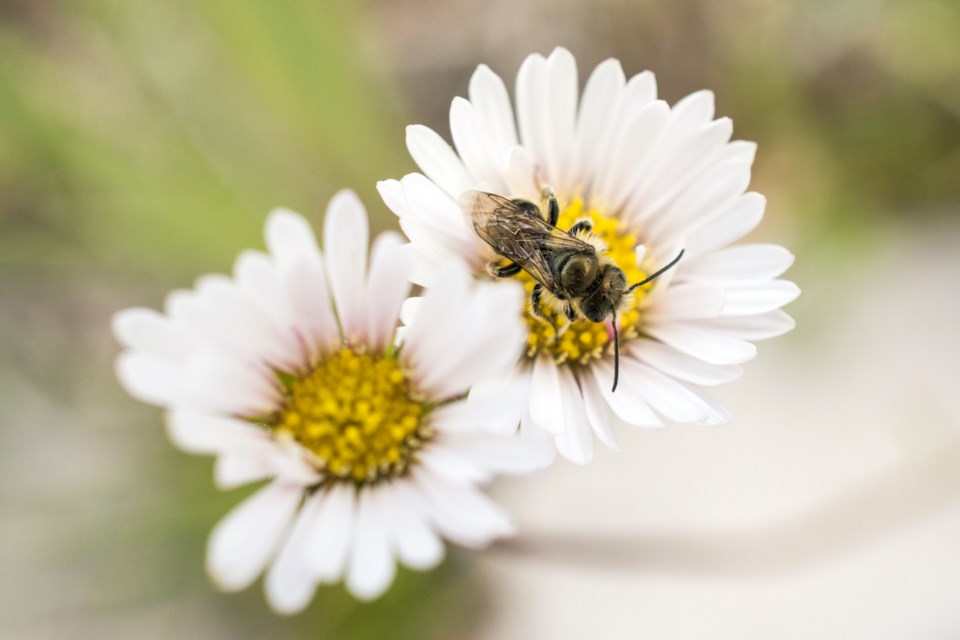With the weather finally warming up across Rocky View County, many see it as the perfect time to get into their backyard and plant a garden.
Gardening plans may have already been made for the season, but the Nature Conservancy of Canada (NCC) hopes to encourage everyone to naturalize their backyards in order to connect with nature close to home.
Choosing to grow native plants is a small act of conservation that can be done anywhere and impacts biodiversity in many ways, according to a press release from NCC.
“We want to encourage everyone even at the smaller scale, because even the small-scale actions can have big cumulative impacts for wildlife and nature,” said Sean Feagan, NCC’s media and communications coordinator in the Alberta region.
This initiative doesn’t mean backyard gardeners need to switch to all native species at once, but they can choose native shrubs, trees, and flowers to add to their spaces moving forward.
The addition of native species helps create a garden with food resources that benefit wild animals and insects.
A great place to start, according to Feagan, is by visiting a local plant nursery to get information on the native species they carry and by researching the basic environment of one’s property, including soil, light, and the plant hardiness zone. Some nurseries import plants and while they may be the correct species, the selection may not be hardy enough for Alberta’s conditions.
“Rocky View County is kind of this transitional zone between the prairies and the foothills,” Feagan said. “I think in a lot of cases, because you can water a garden and have a different regime than a natural environment, your plants will have wider tolerances than out there in nature.”
Flowering shrubs are a great choice for homeowners that provide food sources for pollinators and wildlife, provide cover and maybe some privacy for yards, and a structural habitat for birds and bees, Feagan added. Some examples are Saskatoon berry shrubs with its berries and flowers providing a great food source, as well as shrubby cinquefoil, an ornamental flowering plant and excellent pollinator.
Feagan said there are great online resources for finding native plants, including the Alberta Native Bee Council, which has a top 12 list of native plants. The Alberta Native Plant Council, which has an exhaustive source list on their website, is another good online tool.
“One thing to emphasize is that not only do these plants provide habitat or food resources for wildlife and vertebrates – people understand the importance of bees and providing a bit of extra pollen for them can help them – but they're great-looking plants,” Feagan said. “We have some incredible native plant species that compete with ornamental plant varieties that don't originate from here.
“Why not plant something that looks great but also gives back a little bit?”
Gardeners could see the native plants they’ve added to their gardens while out hiking and it may make people want to conserve those wild spaces more, he added.
It’s important for people not to source native plants from wild spaces, Feagan noted, as it may cause disturbances and alterations to the habitat, hurt plants, cause erosion, and lead to future weed colonization.
NCC’s press release advised that native plants evolved alongside wild bees, butterflies and other species. As a result, they provide better habitat than ornamental varieties do. Native plants are often tolerant to drought and require less water over the spring and summer as well.
Creating a diversity of colour, flower timing, flower types, and flower heights will help provide options for a variety of insects throughout the year, the release noted.
On top of those benefits, the decision to plant native plants will have a significant influence on the diversity and abundance of native wildlife, according to Samantha Knight, NCC’s national conservation science manager.
“Native trees, shrubs and wildflowers support a greater diversity of pollinators and other insects than traditional horticultural plants and are an opportunity to learn about local biodiversity,” Knight said.
Craig Harding, NCC’s director of conservation science and planning in Alberta, said it may take some research to select native plants that provide the most benefit to wildlife.
“Using native plants in your garden also helps create natural pathways through areas that may be lacking good food sources at certain times,” he said. “Learning more about the nutritional and energy content in native plants can help you plan your garden for nectar-and pollen-rich sources.”
One thing to be aware of and watch out for is the fact that invasive species crowd out native ones and can hinder their growth, the release stated.
To find a nearby native plant society and to learn about the local native species, visit the Canadian Council on Invasive Species Be Plant Wise program at canadainvasives.ca/programs/be-plant-wise/
To find out which plants to avoid, visit NCC’s website or provincial invasive species council for information. Download the free iNaturalistapp to help identify plants and for details on some commonly found invasive species, visit bit.ly/39N7i7L




